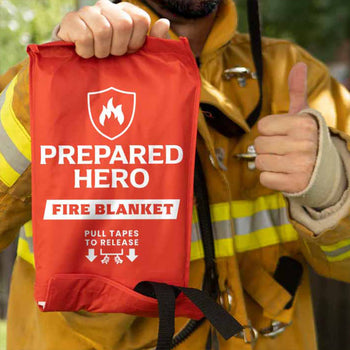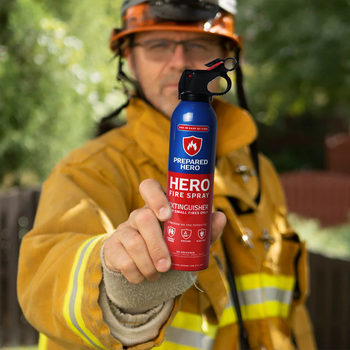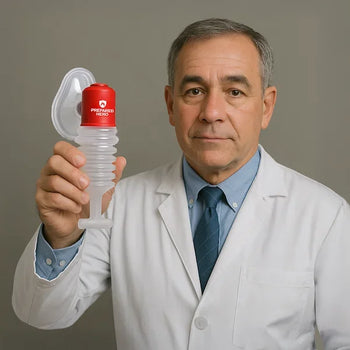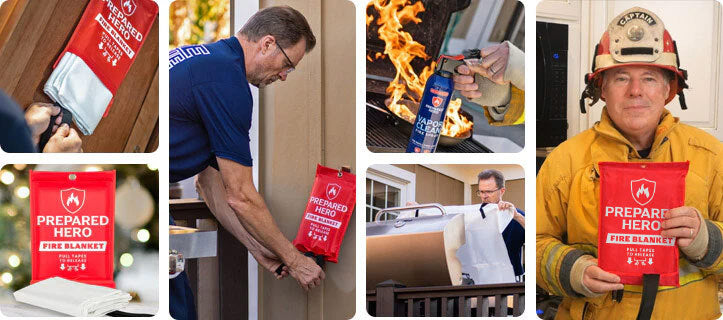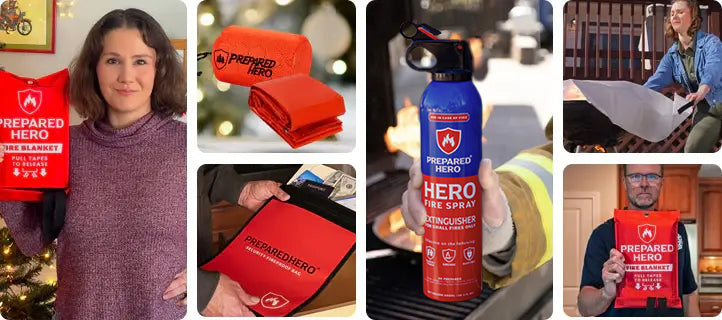Where you put your smoke detectors matters just as much as installing them. Proper placement makes sure they can detect...
A fireplace gives warmth and a relaxing ambiance, but you should prioritize safety above all. Whether you’re using a wood or gas fireplace, knowing how to use it properly keeps you safe.
Routine measures, such as chimney cleaning and using the right wood, significantly reduce fire risks. But if you don’t know where to start, we’ve got your back. In this guide, we’ll cover the top fireplace safety tips to keep your fireplace safe and cozy.
Top 10 Fireplace Safety Tips

Fireplaces keep you warm and cozy, but they can be dangerous if not used properly. Here are some safety tips so you can enjoy your fireplace without worry:
1. Get Your Fireplace and Chimney Checked
Have a certified chimney professional inspect and clean your chimney each year. Problems like creosote buildup lead to chimney fires. While you’re at it, ask them to clear clutter and flammable items near the hearth.
Plus, don’t block the air vents if you’re using a wood stove. Make sure the surrounding walls are fire-resistant, too. Doing these keeps everything under control.
2. Use Dry, Seasoned Wood Only
Wet or soft wood releases too much smoke and creates creosote. Use dry hardwood for a hotter, cleaner burn. Never use household trash, treated wood, paper, or cardboard because they produce toxic fumes and flare up quickly. Always start fires on proper grates and keep them small. Plus, never use gasoline or lighter fluid to start a fire.
3. Put the Fire Out Before Leaving
Don’t leave a burning fire, not even for a minute. Put it out completely if you're stepping out or going to sleep. Remember, a fireplace has a smoldering fire, so it’s not worth the risk.
You should also have a fire blanket, fire spray, and fire extinguisher nearby in case the fire becomes uncontrollable.
4. Clear a Safe Zone Around the Fireplace
Have at least three feet of clear space around your fireplace. There should be no furniture, decorations, or food in this safe zone. If you have kids or pets, put up a gate or barrier to keep them away while the fire’s burning.
5. Use a Screen to Stop Flying Embers
A mesh screen or glass door stops embers and sparks from flying into the room. It’s a small item that can prevent a huge problem. Make sure your screen or glass door is sturdy, and your fireplace is good to go.
6. Dispose of Ashes the Right Way
Ashes can stay hot for days and reignite a fire, even if they look cold. Stay safe by using a metal container with a lid to collect them. Never use a cardboard or plastic bin. Then, store the container away from anything that can burn.
7. Protect the Outside of Your House
Your fireplace might be inside, but you need to protect the outside of your house as well.
Don’t stack firewood right next to your house, and keep it at least 10 feet away. Always clean your roof and gutters, especially if they collect leaves. Then, install a mesh screen on top of your chimney and trim any branches that hang over it.
8. Stay on Top of Smoke and Carbon Monoxide Detectors
You need smoke detectors in every bedroom, outside each sleeping area, and on every level of the home. Test them monthly and change the batteries at least once a year. Carbon monoxide detectors are a must as well, especially if you use gas appliances or burn wood. If you have the budget for it, installing combination smoke and carbon monoxide detectors saves space and offers extra protection.
9. Keep the Damper Open While Burning
Always open the damper before lighting a fire. Keep it open until the fire is completely out and the ashes are cool. Doing this helps with airflow, pulls smoke up the chimney, and prevents it from filling your room.
10. Follow Manufacturer Guidelines
Read and follow manufacturer guidelines, especially if you have a gas fireplace. If there’s a problem, don’t fix it on your own. Call a professional and let them handle it for you.
What Is the 2 + 10 Rule for Fireplaces?

The 2 + 10 rule, also known as the 3-2-10 rule, says your chimney needs to be at least three feet taller than the point where it comes through the roof. It should also be at least two feet taller than anything else on your roof that’s within 10 feet of it, like another part of the roof or a nearby structure.
This rule helps your chimney get enough draft, which pulls smoke out of your house. It also prevents sparks and embers from landing on your roof and starting a structure fire. Following the 2 + 10 rule helps your fireplace run better and your home safer.
Are Fireplaces Safe to Leave On Overnight?
It’s not safe to leave a fireplace burning overnight, no matter what type you have. Whether it’s wood-burning or gas, the risks are just too high. Fires can flare up, sparks can fly, and carbon monoxide can build up without warning. Even if your fireplace has safety features, it’s still not worth the risk. The best thing to do is to fully put out the fire before you head to bed or leave the house. Always keep an eye on any active flame. It might seem cozy to fall asleep by the fire, but safety should always come first.
How Do I Know if My Fireplace Is Vented or Ventless?

You’ll know if your fireplace is vented or ventless by checking for a flue, chimney, or vent pipes leading outside. If you see any of these, your fireplace is likely vented. It’s because it needs a way to push gases out of your home. On the other hand, your fireplace is likely ventless if you don’t see a chimney, flue, or vent pipes.
You can also look at the flames. Vented fireplaces usually have bigger, yellow flames, while ventless models usually have smaller, blue flames. Ventless fireplaces usually have Oxygen Depletion Sensors (ODS) for safety. If you're still unsure, check the manual or label for confirmation.
How to Properly Close Off a Chimney
Do you want to close off a chimney the right way? Start by sealing the top and the inside. Then, install a chimney cap or cowl at the top. Doing this keeps out animals, rain, and debris.
Next, seal the damper and flue inside to block airflow. After this, cover the fireplace opening with a drywall, panel, or something decorative to finish it off. Doing these helps with energy efficiency and keeps drafts out. While you might be tempted to do these yourself, it’s best to have a professional do the job.
Do You Have to Open a Window When Using a Fireplace?

You don’t always need to open a window when using a fireplace, but it’s often a smart move, especially if your home is tightly sealed or if you notice smoke backing into the room. Opening a window helps with airflow and helps make your fireplace burn better.
When you burn wood or gas, your fireplace produces gases that can rise, like carbon monoxide. Normally, these gases should go straight up the chimney. However, if the draft is weak or the air pressure inside your home is too strong, those gases might not rise properly. An open window lets fresh air in, which helps push the smoke and harmful gases out through the chimney like they’re supposed to.
Another reason to open a window is to avoid smoke buildup. Sometimes, fireplaces don’t draft well quickly, especially when starting a fire. If you see smoke coming into the room, opening a window helps balance the air and clears it out faster.
So open the damper, set up your logs, pull aside the screen, and open a nearby window before lighting up your fireplace. These simple steps can help your fireplace burn cleaner and keep your home safer.
What Type of Wood Is Safest to Burn in a Fireplace?
The safest wood to burn in your fireplace is dry, well-seasoned hardwood or softwood. What matters most here is that it’s dry. You see, wet wood produces more smoke and creosote. You shouldn’t burn treated or painted wood, either. They release toxic fumes into your home, which isn’t safe for you or your family. Stick to natural, seasoned logs for clean, safe fires.
Conclusion
Fireplaces keep you warm, but using them safely should always come first. From choosing the right wood to keeping your chimney clean, the tips above go a long way in preventing fires and harmful fumes.
Whether you have a wood or gas fireplace, knowing how to set things up properly makes all the difference. Follow these tips, stay alert, and enjoy the comfort of your fireplace without the worry.
Do you want reliable, easy-to-use, and affordable tools that prevent fires from spreading? Check out Prepared Hero’s fire prevention tools here, and get up to 51% off on certain items. Stay prepared, hero!


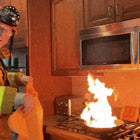 Fire
Fire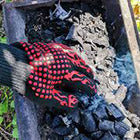 Safety
Safety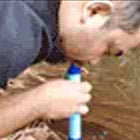 Survival
Survival Protection
Protection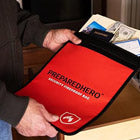 New
New Scouting America
Scouting America
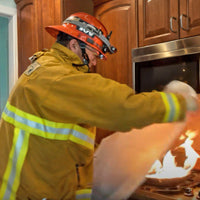 Fire
Fire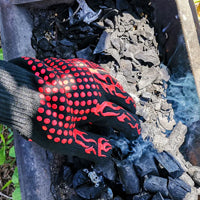 Safety
Safety Survival
Survival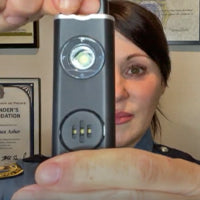 Protection
Protection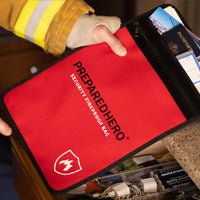 New
New
